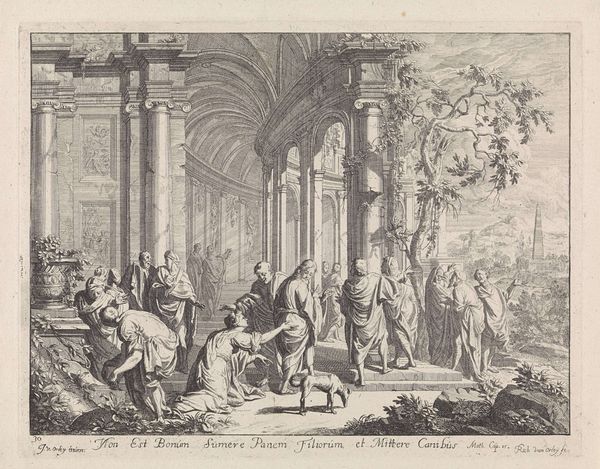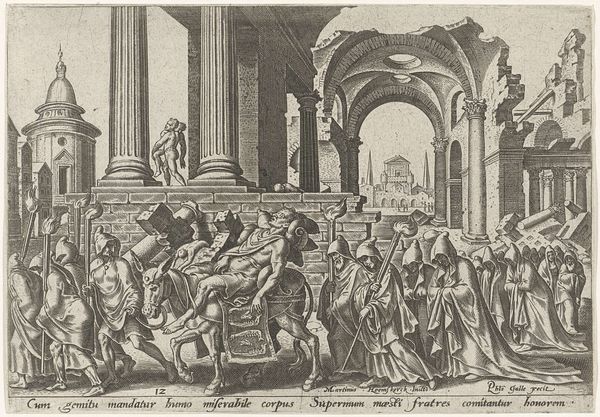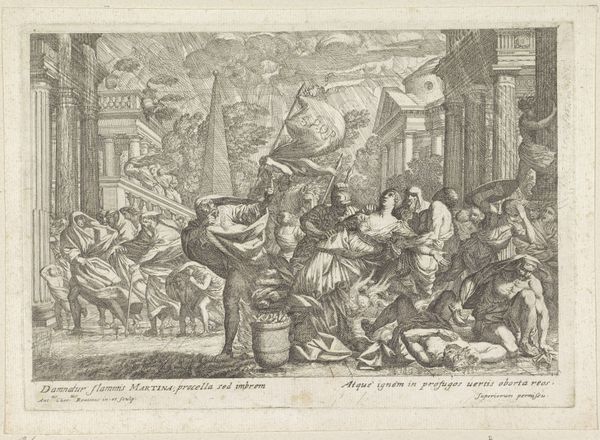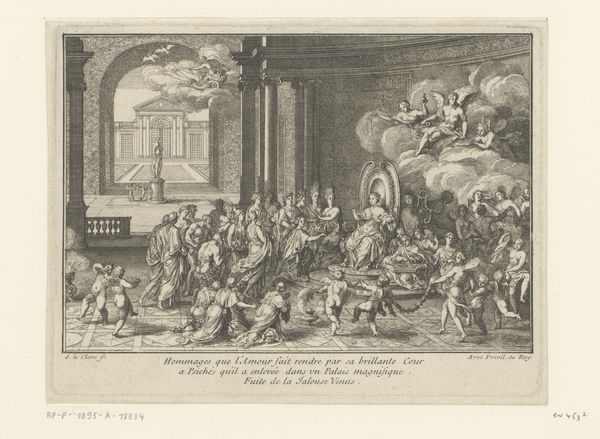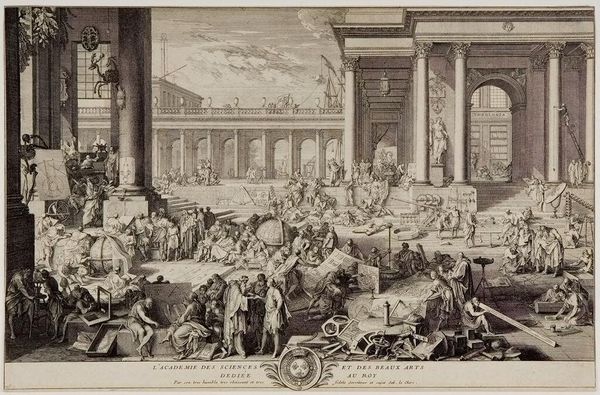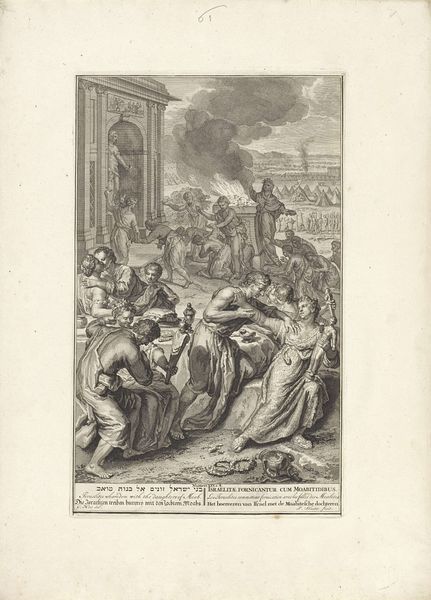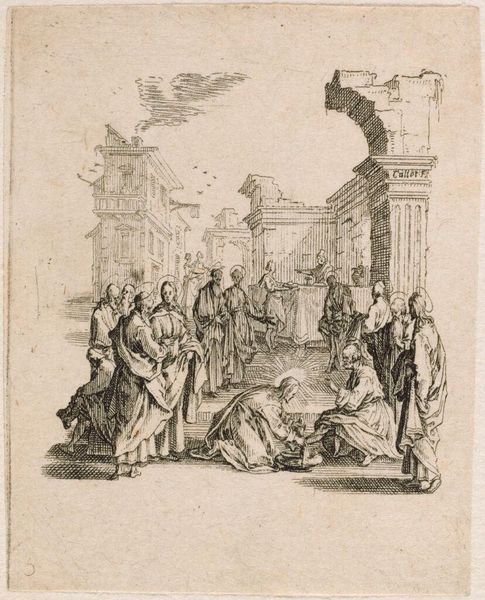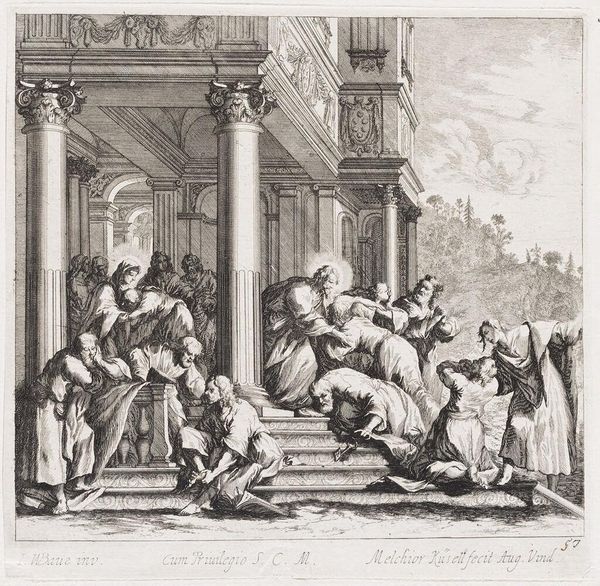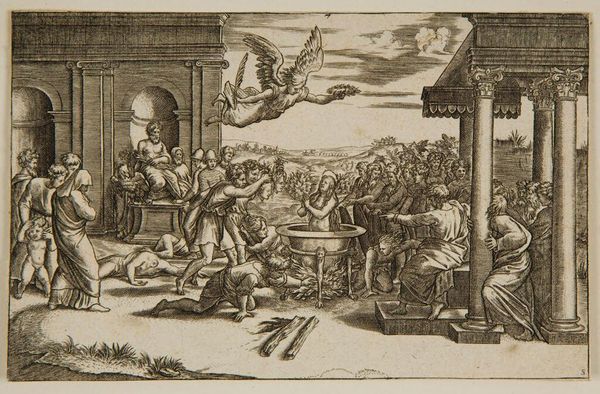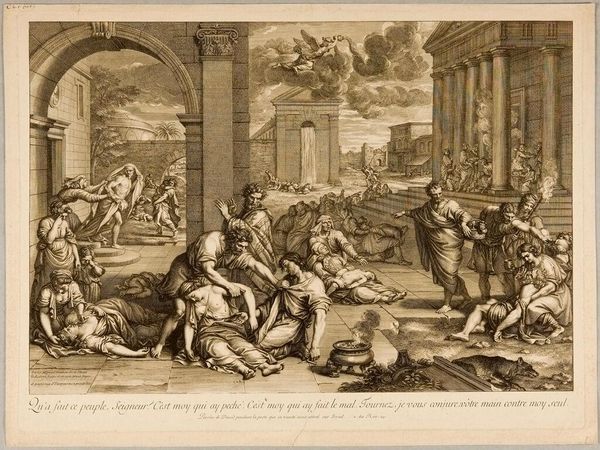
Titelprent met resten van de Tempel van Neptunus te Paestum met titel op blokken 1778
0:00
0:00
francescopiranesi
Rijksmuseum
print, engraving, architecture
#
neoclacissism
# print
#
old engraving style
#
landscape
#
history-painting
#
engraving
#
architecture
Dimensions: height 477 mm, width 680 mm
Copyright: Rijks Museum: Open Domain
Francesco Piranesi made this etching of the Temple of Neptune in Paestum, Italy, sometime before 1810. It presents a group of men amidst the temple ruins, some studying inscriptions on the stones. The image creates meaning through its depiction of classical ruins and the figures engaged in their study. Made during the late 18th and early 19th centuries, a time when Europe was rediscovering classical antiquity, the print reflects the cultural and intellectual movement of Neoclassicism, which sought to revive the art and ideals of ancient Greece and Rome. The rediscovery of sites such as Paestum fueled a fascination with the classical world. Piranesi’s print underscores how art institutions and their patrons shaped the era’s artistic production and reception. As art historians, we might consult travel journals, architectural studies, and period accounts to deepen our understanding. In this way, we can explore the dialogue between past and present that Piranesi's work evokes.
Comments
No comments
Be the first to comment and join the conversation on the ultimate creative platform.

